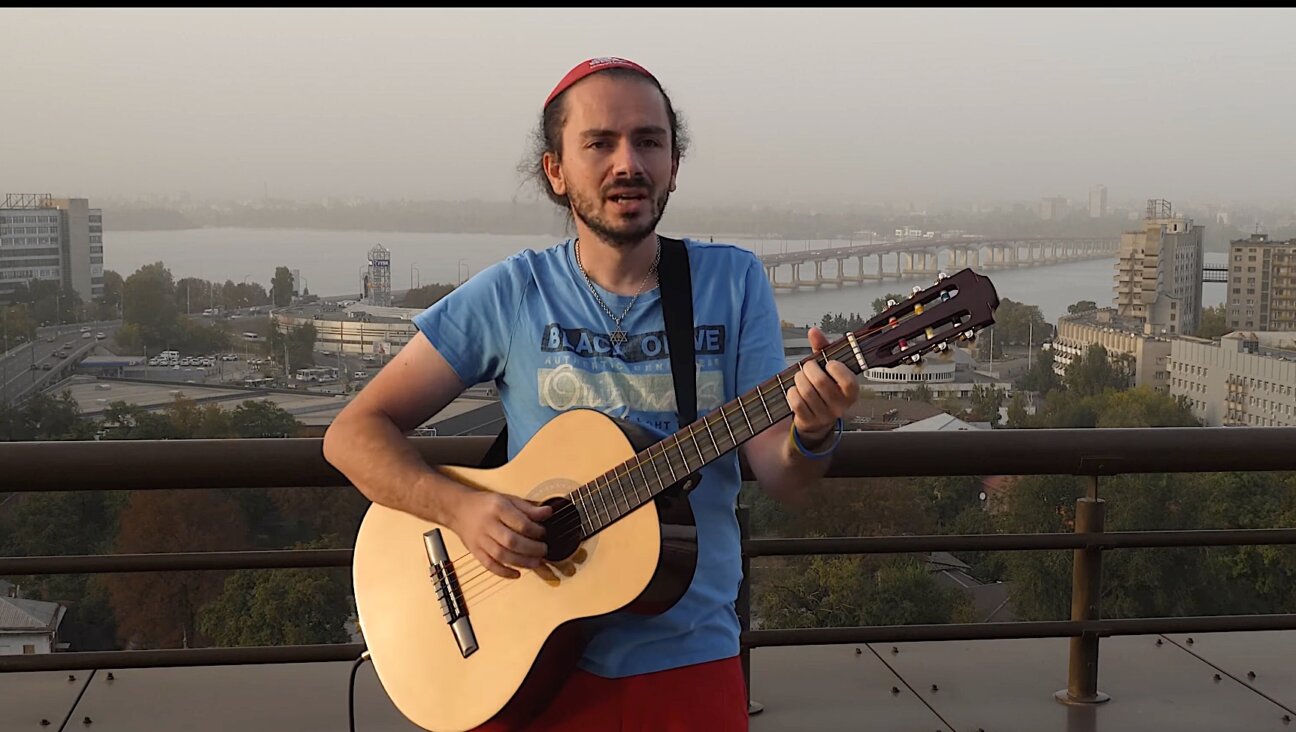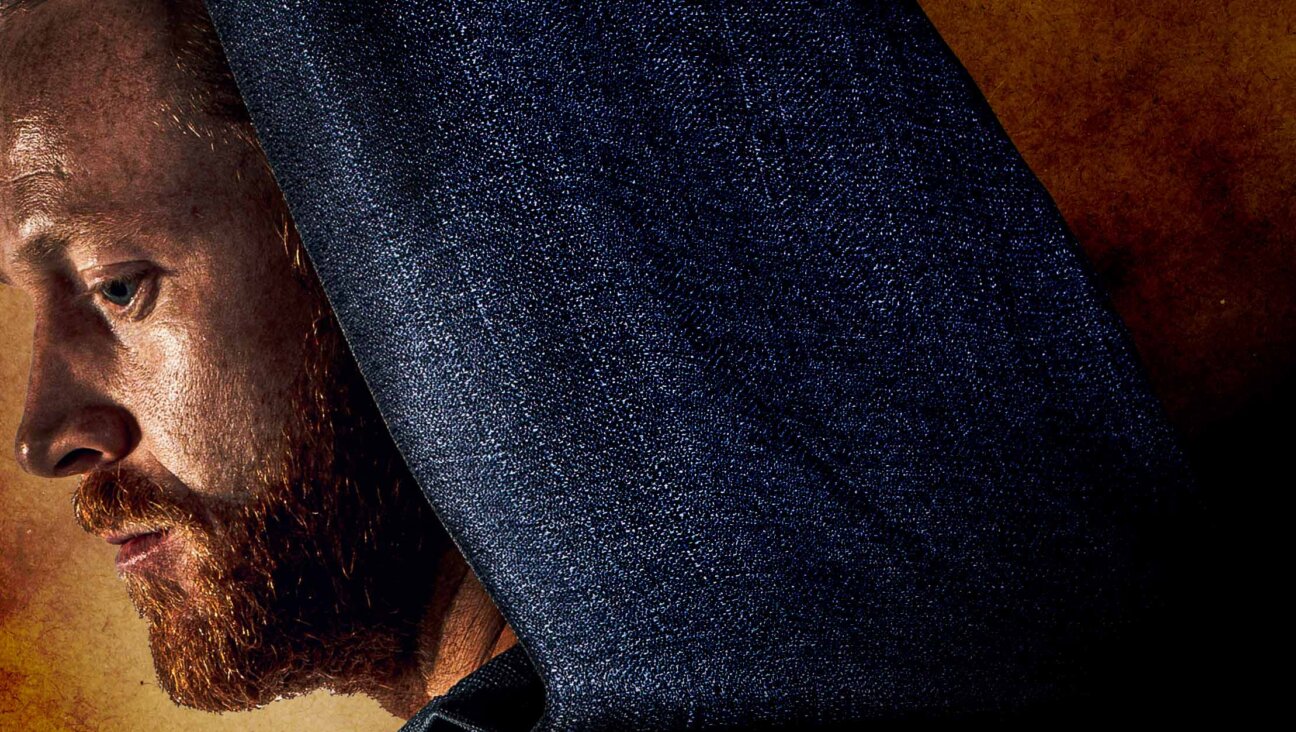How To Talk About Death Over Dinner

Image by Sari Blum Photography
The most striking part of any Shalon dinner is the end — when attendees hug the people with whom they shared a meal and bared a little bit of their souls. Contact info is exchanged, and in what has become a tradition, people who aren’t in a hurry to get home wander into the kitchen as the music is turned up, the dishes get cleaned and an impromptu dance party materializes. It’s a reminder that no matter how serious the conversation, how challenging the past week and how much work is left to be done, people feel strengthened when they gather around the dinner table, when they give themselves time to reflect and unwind and when they open themselves to new things. At the end of the day, a little 90s hop-hop music doesn’t hurt either.
Shalon, a combination of a Friday night Shabbat dinner and a salon environment for learning, was created to facilitate conversations in a welcoming environment over incredible gourmet meals. Each Shalon is an opportunity to disconnect from the day to day and to focus on issues that impact us, our families and our communities.
In January 2018, the Shalon community came together to explore expectations, hopes and fears around death. As guests arrived and were handed a glass of bubbly, they greeted old friends and introduced themselves to new acquaintances. People settled into small groups and began to break the ice by responding to cards which prompted them to reflect on and verbalize how they approach situations, how they’d like to be remembered and what fills their bucket lists.
The beauty of Shalon is that as we break bread together, we all become more open and share sensitive opinions without fear of judgement. The diverse group settled into the table as traditional prayers over candles, wine and Challah were recited and explained. Everyone, Jews and non-Jews, shifted their mindset away from work and any mundane tasks waiting for them and focused on connecting with the people and ideas around them.
Chef Brendan Darby created a fabulous menu — inspired by the topic as well! He taught the table that every chef starts their culinary education with the fundamentals of French cooking and that when a fellow chef or teacher dies, their community cooks French comfort food to honor their memory. The delicious smoked trout salad nicoise, ratatouille, whipped potatoes, cauliflower gratin and Chicken Lyonnaise augmented the conversation beautifully and we wrapped up the evening with full hearts, feasting on Persian Love Cakes.
The evening was filled with stories, empathy and even laughter. By coming together to tackle what is often taboo, we were able to shift our mindset to from morbid to moving, from procrastination to personal commitments to design our time in this world and our impact after we depart.
Creating a Successful #DeathOverDinner Event
If you’re interested in hosting your own dinner to talk about death, there are tremendous resources available, but feel free to put your own spin on the conversation. Organize the flow of the evening with open-ended questions that allow people to get to know one another and to join the conversation as they feel comfortable.
While previous Shalons have focused on public issues that impact large groups of people, such as addressing homelessness, understanding healthcare reform, resisting gender inequality in the workplace and political engagement, death is a very individual and internally focused theme. In order to be sensitive to the dichotomy of a beautiful Friday night Shabbat dinner and a potentially tough topic, the conversation was broken into three parts and I did a lot of reading in advance to prepare questions and statements that would prompt thoughtful and open discussion amongst guests. I started to build a network of experts and those passionate about the topic and used social media and email to share links, thoughts and questions so people could arrive feeling prepared.
We started with the most joyous and seemingly simple piece of the conversation to get everyone’s juices flowing: living full meaningful lives.
The first question discussed at the table was: What opportunities can we take to avoid regrets at the end of our lives? What are adventures you hope to take, goals you’ve set and which relationships are most important to you?
I found it helpful to share a personal anecdote of my grandfather who passed away while traveling, doing what he loved. To this day, my sister, cousin and I all treasure necklaces that he bought on his trip, not for their monetary value (since they were purchased for small children, we know they weren’t expensive) but for the sentiment that they remind us of: to follow our dreams and to share what we love with the people we care about.
If you have designed a meal with courses, it’s easy to move from one topic to the next as you move through the courses. We served family style to accommodate our large group and the space where we were gathered. As empty salad platters were removed to be replaced with the second course, it was the perfect time to transition to the topic of planning for death. Again, I encouraged participants to get involved in the conversation by sharing my own confusion and procrastination around planning for my own end of life.
I presented the table with the following question and asked them to discuss with their neighbors: **How can we educate ourselves and enable our loved ones and medical providers to understand and adhere to our personal philosophies on where and how we’d prefer to die?* As we came back together as a group and the table discussed the fact that people tend not to use available resources to avoid having uncomfortable conversations, Shruti Korhari, previously a Principal in Kaiser’s Continuum Care Experience team, stressed the importance of making benefits and options less confusing to the growing population that will be forced to make decisions and rely on hospital, hospice or home care as they near the end of their lives. She shared several planning resources including Coalition for Compassionate Care – Tools for Advance Care Planning, Prepare Created by Dr. Rebecca Sudore (UCSF), evidenced based, and developed for low literacy populations, Kaiser Permanente’s Life Care Planning Portal and Advance Care Directives planning for end of life from The Mayo Clinic.
Our main course came as guests truly started to settle into the evening, feeling comfortable disclosing more private notions with the people around them. In order to level set amongst everyone at a large table, I did a quick recap of what I’d heard various groups discussing. Highlighting the support and encouragement that people were offering each other at the table enabled me to transition to the final topic of the evening: managing the aftermath of death.
I posed the final question of the evening: How can we cope with grief, support others through loss and create bonds when so many feel disconnected?
Dara Kosberg, a DinnerParty founder and facilitator, shared ground rules that anyone can incorporate into supportive conversations about loss: “speak your own truth and listen deeply, openly and thoughtfully as others share theirs.”
Throughout the night, sensitivity had been paramount — not everyone shares the same beliefs around lifestyle, medical treatment, end of life decisions etc., but this was the time when I felt most aware of the need to remind the table that everyone grieves in a unique way, for different things and in their own time.
As we transitioned into dessert, Brad Wolfe, founder of re:Imagine, brought out his guitar and played a song he’d written to commemorate a friend’s battle with cancer. Not only beautiful and moving, it aligned perfectly with attendees’ insight and experiences around reframing loss as individuals rebuild after experiencing their loved one’s end of life.
My final formal interaction with the guests at the table was to pass out cards where attendees could write down a commitment to themselves around continuing the conversation, preparing for their end of life and living fully with the people who matter most to them. They addressed envelopes to themselves so that the cards could be mailed as a reminder at a later date. While most chose to participate in the activity, some did not, and that was fine; Shalon is about making choices that are right for each individual, not sticking to a status quo.
Wrapping up, one guest wondered quietly, “when we face others’ struggles, where is the line between fear of experiencing the same and appreciation for all that we have and all that is left to come?” The evening ended as guests considered this dichotomy between grief and gratitude, life and loss, knowing that without one, we may disregard the other and miss opportunities to connect and thrive while we still have time.
A message from our CEO & publisher Rachel Fishman Feddersen

I hope you appreciated this article. Before you go, I’d like to ask you to please support the Forward’s award-winning, nonprofit journalism during this critical time.
At a time when other newsrooms are closing or cutting back, the Forward has removed its paywall and invested additional resources to report on the ground from Israel and around the U.S. on the impact of the war, rising antisemitism and polarized discourse.
Readers like you make it all possible. Support our work by becoming a Forward Member and connect with our journalism and your community.
— Rachel Fishman Feddersen, Publisher and CEO
























